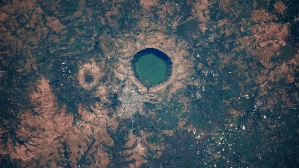Natir Pooja completes 80 years
Natir Pooja is the only film ever directed by Rabindranath Tagore,in 1931.
Few outside West Bengal know that Rabindranath Tagore directed a film based on Natir Pooja,a dramatised version of his long poem Poojarini. This was an all-woman play he wrote on the request of his daughter-in-law Pratima Devi who wished to perform it on the poets 70th birthday. The first performance was in Uttarayan at Konark,Shantiniketan. It was later performed at the Tagores Jorasanko residence in Calcutta followed by another ticketed performance at New Empire aimed at raising funds for Viswa Bharati.
An impressed B. N. Sircar,founder-proprietor of New Theatres,invited Tagore to direct a film version in 1931. The studio was flooded with crowds who wanted to have a glimpse of Tagore who directed the film at NT Studios floor number one. He played the role of Upala which was added later and assembled his acting cast from Shantiniketan. Nitin Bose cinematographed the film and Subodh Mitra edited it. Breaking the conventional rules of cinema,Natir Pooja was filmed like a stage play. After editing,the footage was 10,577 feet long. It was released at Chitra Talkies on March 14,1932. Sadly,prints of the film were destroyed in a fire at the New Theatres. Natir Pooja is the 2,500 year old story of a nati (danseuse) who sacrifices herself because of her devotion to Buddha. Tagore based the play on a legend in the Pali sacred book,Avadhan Shatak.
Bengal Studio of Uttarpara,a Kolkata suburb,had organised an exhibition of photographs of the film and the salvaged copy of the original manuscript as a tribute to Natir Pooja,the film. The exhibition,conceived,curated and organised by archivist Arindam Saha Sardar was inaugurated on June 11 by Tagore historian Rudraprasad Chakraborty,danseuse and academic Amita Dutta,national award-winning Tagore archivist and curator Arun Kumar Roy and Sushobhan Adhikari. A DVD of the photographs was also made available for sale at the venue. l



- 01
- 02
- 03
- 04
- 05




























